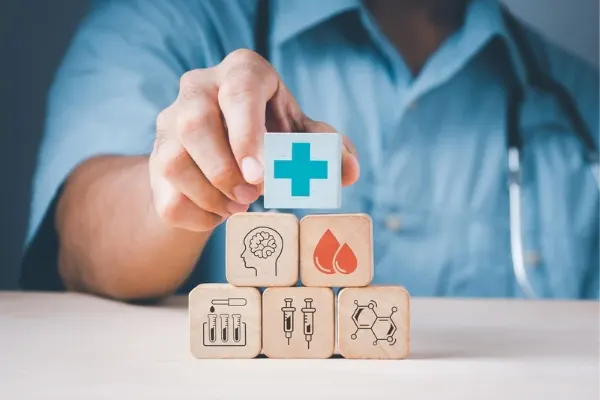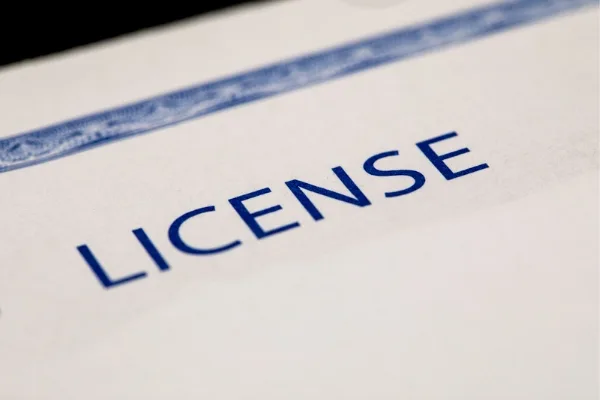Nurse practitioners are advanced practice nurses who provide patients with primary care and other health services. They often collaborate with physicians and other healthcare professionals, and they focus on holistic patient care that is comprehensive and tailored to the individual’s needs.

Becoming a nurse practitioner can be a rigorous process, but it can be extremely rewarding. This is especially true for those who are dedicated and committed to hard work.
As an NP, you can diagnose and treat illnesses, order and interpret diagnostic tests, and prescribe medications. Here is a step-by-step guide on how to become a nurse practitioner:
The Difference Between LPN, RN, And NP
LPNs, RNs, and NPs are all nursing professionals, but each has a distinct difference in level in terms of their job responsibilities, education, and practice.

LPN, or Licensed Practical Nurse, has completed a shorter vocational education. They have passed a national licensure exam and typically work under the supervision of RNs or physicians. LPNs are responsible for tasks such as administering medication and monitoring patients’ vital signs.
On the flip side, an RN or Registered Nurse has a higher level of education than LPNs, they have completed college-level education and passed a national licensure exam.
RNs can perform more complex nursing tasks, such as developing care plans, leading a team of healthcare providers, and making independent clinical decisions.

RNs also have the authority to delegate tasks to LPNs and have a broader scope of practice than LPNs. Providing education to patients and their families is also part of their responsibilities.
Lastly, a Nurse Practitioner (NP) typically has more advanced training and broader responsibilities than a Registered Nurse. NPs have completed graduate education and passed a national certification exam, allowing them to diagnose and treat patients. They often work independently or with physician oversight.
Read our article on nurse saves student’s life
Nurse Practitioner Responsibilities

As a nurse practitioner, you have a wide range of responsibilities, including:
- Providing primary and specialty healthcare: you can diagnose and treat patients, order and interpret diagnostic tests, and prescribe medications.
- Managing chronic conditions: you will work with patients to develop and implement treatment plans for chronic conditions such as diabetes, heart disease, and hypertension.
- Conducting physical exams and screenings: you are trained to perform physical exams and screenings, such as mammograms and colon cancer screenings, to help prevent or diagnose health problems.
- Ordering and interpreting diagnostic tests: you can order and interpret diagnostic tests such as x-rays, CT scans, and lab work to assist in diagnosing and treating patients.
- Prescribing medication: you can prescribe medication to treat a wide range of conditions. You will work with patients to determine the best treatment plan, including medication use, and monitor patients to ensure that the medication works as intended.
- Educating patients: you play a key role in educating patients about their health conditions, treatment options, and how to maintain their health.
- Collaborating with other healthcare professionals: you will often work as part of a healthcare team, collaborating with physicians, nurses, and other healthcare providers to provide the best possible care for patients.
Overall, the responsibilities of a nurse practitioner are diverse and varied, but all center around providing high-quality, patient-centered healthcare.

Step 1: Earn a Bachelor of Science in Nursing (BSN)
The first step to becoming an NP is earning a BSN from an accredited nursing program. A BSN program typically takes four years to complete. It includes coursework in nursing theory, patient care, pharmacology, and medical-surgical nursing. It also includes clinical experience in a variety of healthcare settings.
Step 2: Obtain a Registered Nurse (RN) License
Once you have earned your BSN, you must pass the NCLEX-RN (National Council Licensure Examination for Registered Nurses) to become a registered nurse.
Step 3: Gain Experience as an RN
Before applying to an NP program, it is recommended that you gain a minimum of two years of experience as an RN in a healthcare setting. This will allow you to gain hands-on experience in patient care and an understanding of the healthcare system and the various roles of healthcare professionals.

Step 4: Earn a Master of Science in Nursing (MSN)
The next step is to earn an MSN (Master of Science in Nursing) from an accredited nursing program. This typically takes two years to complete. Includes coursework in advanced nursing practice, pharmacology, and healthcare systems. Also, a clinical component where you gain experience in a specific area of practice.
Step 5: Obtain National Certification
After completing an MSN program, you will need to obtain national certification as an NP. The certification process involves passing a certification exam, such as the American Nurses Credentialing Center (ANCC) or the American Association of Nurse Practitioners (AANP) certification exam. These exams test your knowledge and skills in your area of specialization, such as:
- Adult-Gerontology Nurse Practitioner (A-GNP)
- Psychiatric-Mental Health Nurse Practitioner (PMHNP)
- Family Nurse Practitioner (FNP)
- Pediatric Nurse Practitioner (PNP)
- Neonatal Nurse Practitioner (NNP)
- Women’s Health Nurse Practitioner (WHNP)
Step 6: Obtain State Licensure
Once you have obtained national certification, you will need to obtain state licensure to practice as an NP. Each state has its licensing requirements, including passing a state certification exam and completing continuing education.

Step 7: Maintain Certification and Licensure
Once you have completed all of the steps to become an NP, you will need to maintain your certification and licensure.
This includes completing continuing education and renewing your license and certification regularly.
Final Thoughts
Becoming an NP is a challenging and rewarding journey that requires significant time, energy, and resources.
However, committing to the process is crucial. Acquiring the necessary knowledge and skills is vital. Remaining dedicated to your goal is essential. Only then can you successfully navigate the path to becoming an NP.
Along the way, seeking the right education and gaining relevant experience is essential to prepare you for the role. With these tools and resources, you will be well-equipped to make a positive impact on the lives of others as an NP.
Remember, the road to success may be long and winding, but with perseverance and determination, you can overcome any obstacle that may come your way. And don’t forget to take care of yourself, and enjoy the journey.